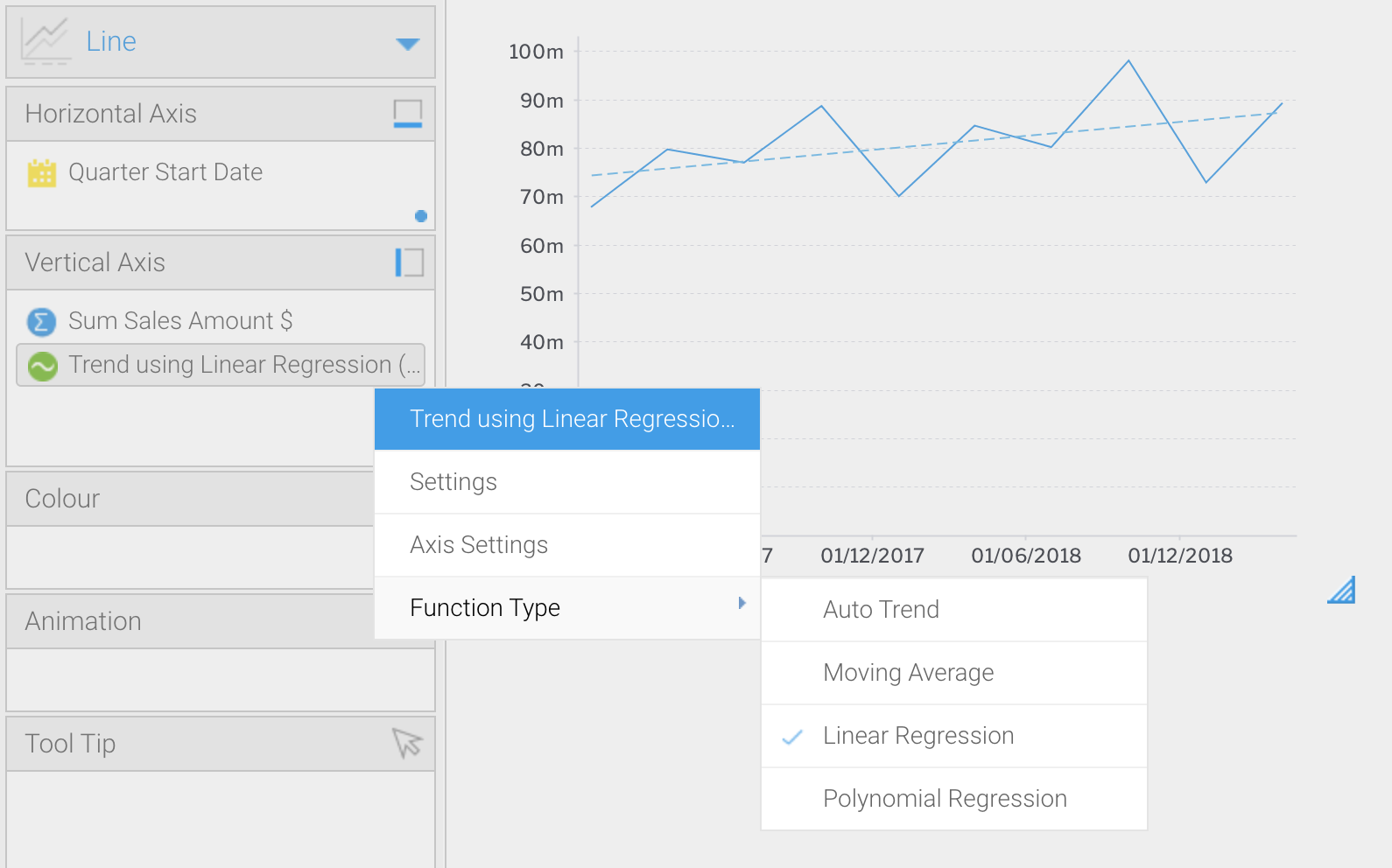Yellowfin Evaluation Guide
Yellowfin is used for both enterprise analytics and embedded analytics use cases and for building bespoke analytical applications. Use this guide to ensure Yellowfin is the right technical fit for your requirements.
Data Science Integration
-
Data Science Integration
Updated 31 May 2022How can I do advanced analytics in Yellowfin?
Yellowfin supports multiple types of advanced analytics ranging from simple predictive analysis to custom data science models.
Depending on the use case, we support advanced analytics through:
Analytic Functions
After an initial query to retrieve data, Yellowfin allows post-processing calculations to be applied to report query results and transform them through Advanced Functions. This is an open framework that allows you to not only use our native functions but to bring your own specific post-query column operations into the platform.
It is through this framework that Yellowfin enables you to drop your custom predictive models into Yellowfin reports and visualizations and run them in real-time. Integration with proprietary or open source API-based data science capabilities is also supported through this framework.
Chart Functions
For visualizations, Yellowfin provides support for popular calculations through single click native functions that include Auto Trending and Forecasting, Averages (mean, median, mode) and Accumulation types. You can also perform Set Analysis and Variance Analysis here.
Transform Steps
Yellowfin supports ETL operations with Transformation Flows. Transformation Flows allow you to build a data pipeline that includes data preparation, cleansing, enrichment, and also embed predictive models.
Your predictive models can be embedded as a Transform Step. Like Advanced Functions, Transform Steps are an extensible framework, and you can not only utilize our native transform steps for predictive analytics but write your own step if your data science platform is not currently supported.
Can Yellowfin perform advanced analysis out of the box?
Yes, Yellowfin has native predictive forecasting including Auto Trend, Simple, Double and Triple Exponential Smoothing, Moving Average, Linear and Polynomial Regression – based on ETS and Holt-Winters.
Yellowfin Signals provides automated analysis and monitoring, and contains multiple algorithms that cover linear, logistic regression and coefficient of variation models.
Can I create my own custom analytical functions?
Yes, you can add your own custom analytic functions to perform advanced calculations on report data using your own preferred algorithms.
Further Reading:
Read more about Custom Advanced Functions here
I already have a data science team, how can I integrate their work into Yellowfin?
The most common issue faced by data science and business intelligence teams in analytics deployments is the last mile before value e.g bringing their models, their work into production.
We set out to ensure that these data science models could be consumed and shared easily between teams, all in a single analytics platform. Your data science teams can drop models from their own tools into production and allow BI infrastructure to integrate with these models.
Yellowfin enables this by supporting popular standard outputs like PMML and PFA, as well as creating a framework to allow the integration of proprietary or open source API-based data science capabilities.
What modeling tools and platforms does Yellowfin support?
Yellowfin supports any data science model exported in PMML and PFA. Every popular tool in the data science industry supports these formats including R, Python, KNIME, RapidMiner, SAS, SPSS to frameworks and libraries like TensorFlow, LightGBM, and XGBoost.
Yellowfin also supports the integration of proprietary or open source API-based data science capabilities including H2O.ai and AWS Sagemaker.
How do I run a data science model on the fly?
During ad hoc analysis in Yellowfin reports, Yellowfin can connect live to data science models in R, H2O.ai, AWS Sagemaker using an advanced function and have it run across your report data and visualizations in real-time. This also applies to self-contained model outputs exported in PMML and PFA formats.
Can I use my own data science model to update records in my data warehouse?
Yes, your data science models can be embedded as a step in a Transformation Flow. This allows the predicted value outputs from your models to update records in your data warehouse.
Can I track actions taken by users on model suggestions?
Yes, Yellowfin allows you to embed operational workflows from model outputs in your reports and dashboards to other applications through Actions. This allows you to ‘close the loop’ in predictive analytics. A good use case would be a:
- Pipeline report with your embedded data science model predicting next day purchase for your prospects
- Accompanying action button allowing your account reps to immediately contact those prospects and automatically performing writebacks to your CRM
- CRM report showing the prospects that have been contacted, all in real-time
Further Reading:
